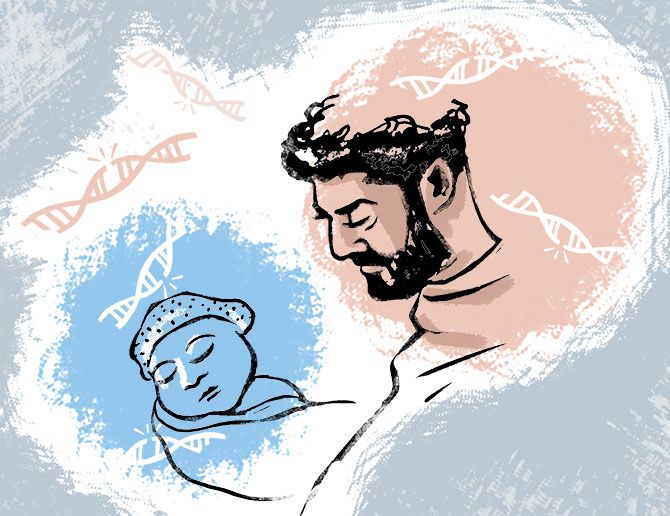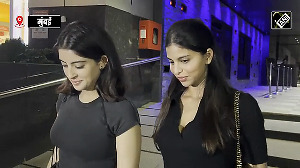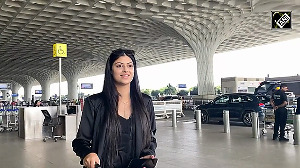A wide range of diseases including thalassemia, retinitis, muscular dystrophy, cancers, HIV, AIDS can be treated with Antisense therapy that targets the mRNA to prevent information from a mutated gene from being expressed, says Devangshu Datta.
Illustration: Dominic Xavier/Rediff.com

A heartbreaking post by Rohan Seth, a computer scientist based in San Francisco, was doing the rounds on social media.
Seth and his partner, Jen, had a child, Lydia, about six months ago.
Soon after birth, she started having seizures.
They discovered after many tests that "a tiny random mutation in a critical gene is affecting her brain function, causing severe disabilities and suffering".
Faced with this situation, Jen and Rohan did their research and decided to "open source their baby in the hopes of saving her, and millions like her".
They set up a non-profit and raised $1.5 million to fund research.
There is hope based on a new procedure and the parents hope there could be treatment within months.
The Seths discovered that there are only two other persons known to have exactly the same genetic mutation.
The nucleotide bases of DNA (deoxyribonucleic acid) are adenine, thymine, cytosine, and guanine (A, T, C, G).
In Lydia's DNA, the "A" was replaced by a "G" at position 683 of the gene KCNQ2.
There are six billion-odd characters in any human's DNA and this sort of "typo", as Seth calls a mutation, can occur anywhere in that string.
So conventional tests don't pick it up.
While negative mutations affect millions of people worldwide, any given mutation may be so rare that no pharma company will bother to research for a potential treatment.
The Seths discovered that there is a technology called antisense oligonucleotides (ASOs) that can silence such mutations.
The first approved ASO drug only became commercially available in 2016.
It is possible to create an ASO drug that exactly targets a specific mutation.
The mission of the Lydian Accelerator is to create an open source database of ASO research.
Genetic expression occurs via a process where the DNA transmits information to the ribosome via what's known as Messenger RNA (mRNA where RNA stands for ribonucleic acid).
The ribosome is a sort of large molecular factory, which is found in all living cells.
It uses the information it receives from mRNA to create proteins.
Antisense therapy targets the mRNA to prevent information from a mutated gene from being expressed in this fashion by suppressing the message from the DNA to the ribosome.
Oligonucleotides are short fragments of nucleic acid.
In antisense therapy, the misbehaving gene is first identified.
Then an oligonucleotide is chemically synthesised to neutralise the information transmitted to the mRNA by that mutated gene.
This is very specific, accurate targeting, that can create designer drugs targeting just one individual.
As with DNA, mRNA genetic information is in the sequence of nucleotides, which are arranged into codons consisting of three base pairs each.
The oligonucleotides physically bind to mRNA and can neutralise instructions for creating a specific protein.
The treatment has been used to treat a wide range of diseases including thalassemia, retinitis, muscular dystrophy, cancers, HIV, AIDS.
The effects of ASOs in influencing RNA processing protein expression were discovered over two decades ago.
The antisense effect of a synthetic oligonucleotide sequence was first demonstrated in the late 1970s by Zamecnik and Stephenson.
However, the progress in using these technologies has been slow.
The US Food and Drug Administration approval for the commercialisation of the first ASO, Vitravene (for cytomegalovirus retinitis) came through in 2016.
It was as recently as 2018 that Dr Timothy Yu at Boston Children's Hospital created the first designer antisense drug targeting an individual.
But approvals of ASOs for the treatment of spinal muscular atrophy and duchenne muscular dystrophy have been received.
This technology holds the potential to change the therapeutic landscape for many neurological and non-neurological conditions in the future.
But its expensive and potential side effects must be studied.
The Seths could provide an impetus through their NGO.
As they say, as computer scientists, they believe in open platforms.
"By open sourcing the processes, tools and data from the first few N-of-1s, we can empower any institute to create one.
"We can then build a shared database of efficacy and safety data -- anyone performing an N-of-1 (creating a designer drug for an individual) should be able to tap into this repository as long as they contribute back with their data.
"With more data, we may be able to use algorithms to reduce or even eliminate lab work that constitutes the bulk of the costs today.
"With each treatment, we can reduce the time and cost for the next one."
This could be an unusual concatenation of cutting edge technology, and crowd sourced research disrupting the traditional model of drug development.













 © 2025
© 2025